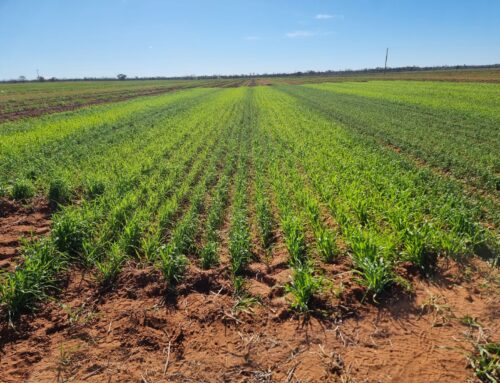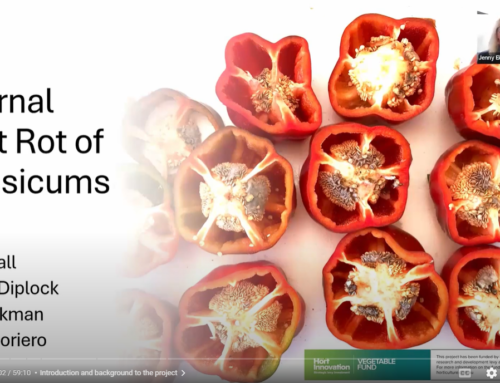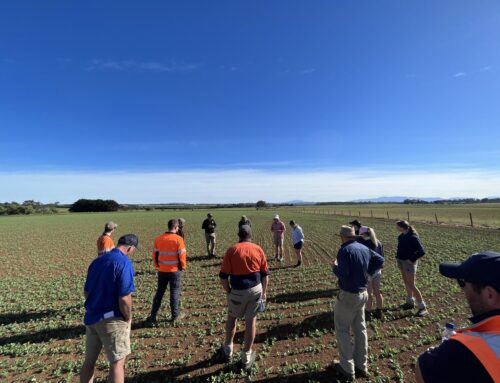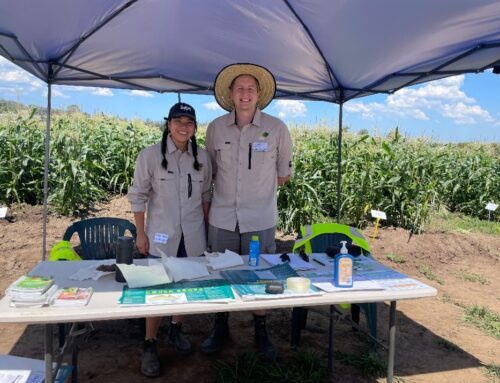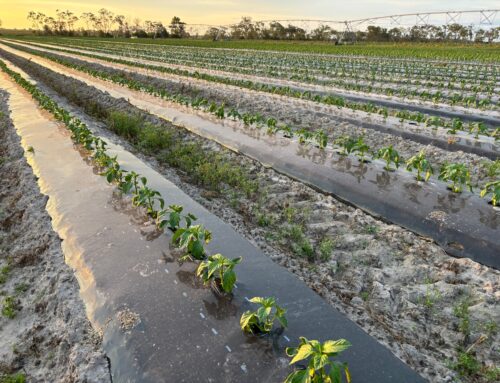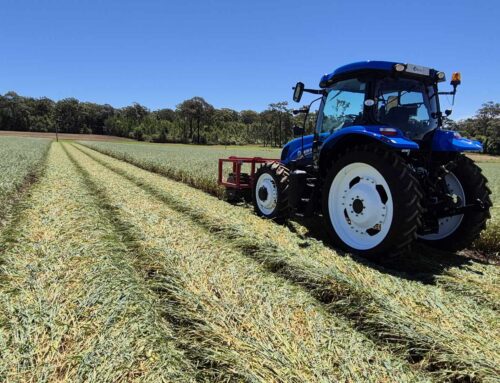The vegetable industry welcomed the Victorian Vegetable Innovation Days (VicVID) from 27-28 April 2023.
More than 600 local and international industry members travelled to Butler Market Gardens at Catani, on the border of Melbourne’s south-east and Gippsland, to see the latest horticultural innovations from seed companies, agrichemical companies and the vegetable industry supply chain.
The Soil Wealth ICP team enjoyed exhibiting at VicVID and supporting the communication of results from the agrichemical and seed field trials via Facebook livestreams, following the success of this approach at the 2020 East Gippsland Vegetable Innovation Days.
Soil Wealth ICP team members Dr Kelvin Montagu, Carl Larsen, Dimi Kyriakou, Jed Clark and Camilla Humphries spoke to attendees about the project and shared the practical resources available to growers on soil management and plant health.
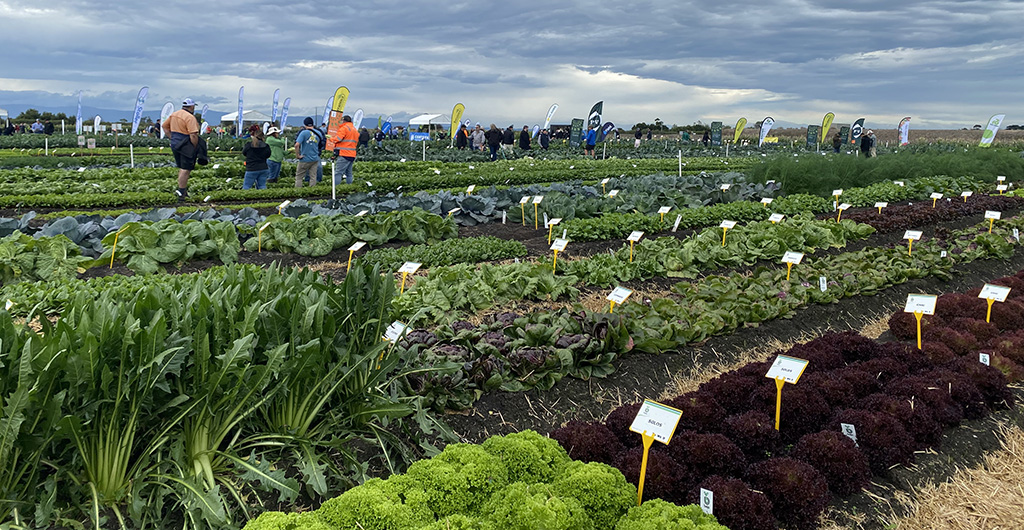
Cover crops prove popular with VicVID visitors
Among the extensive rows of leafy greens and brassicas was a Soil Wealth ICP cover crop trial which attracted the interest of attendees. The cover crops sown in late February 2023 were:
- Forage barley
- Buckwheat
- Japanese (shirohie) millet
- Mixed legumes – sunn hemp, soybean, cowpea, lablab
- Mixed species – annual ryegrass, oats, benetas vetch and crimson clover
Cover crop expert Dr Kelvin Montagu hosted two groups on a field walk through the cover crop trial and discussed the varieties chosen, how they performed, their benefits, termination considerations and helpful tips to keep in mind, and answered questions from the audience.
As cover crops would usually be sown at the end of April in the Catani region, some of the trial plots performed better than others due to the local weather and soil conditions, particularly the buckwheat cover crop and mixed species cover crop.
Our top five cover crop insights from Kelvin are listed below.
- Cover crop benefits: Cover crops can be used to protect soils, control weeds and soil-borne diseases, build soil health or act as a break crop.
- Tailored solution: The biggest challenge when choosing a cover crop is making sure it works in your farming system and meets your desired goals. It is important to match the cover crop species to your growing conditions, otherwise weeds are likely to out-compete your cover crop.
- Plan to terminate: The termination of your cover crop is one of the most important elements to consider during the planning stage as this will set you up for success. This includes timing of termination; a good indicator for termination of cereal cover crops is to squeeze the seeds and see if they emit a milky substance. You should also consider if you want the cover crop to decompose quickly at termination (i.e. to plant a cash crop) or maintain a higher biomass on the surface to protect your soils.
- Nitrogen booster: Legume cover crops are popular with many growers as they are a valuable source of nitrogen, with potential to add 150-200 units of nitrogen in around three months. It is important to consider your soil condition and soil temperature when choosing this option.
- Mix it up carefully: Mixed cover crops add a level of complexity, particularly if you only want to grow cover crops for a short timeframe (e.g. 4-6 weeks). Make sure you get the balance of the cover crop mix right otherwise some species will dominate others – a good tip is to limit the mix to four species. If you are starting out with cover crops, stick to planting one species and build up your experience and knowledge.
Soil Wealth ICP congratulates the VicVID organising committee on delivering a successful event for the Victorian vegetable industry.
More information
Take a look at our cover crop posters for more information:
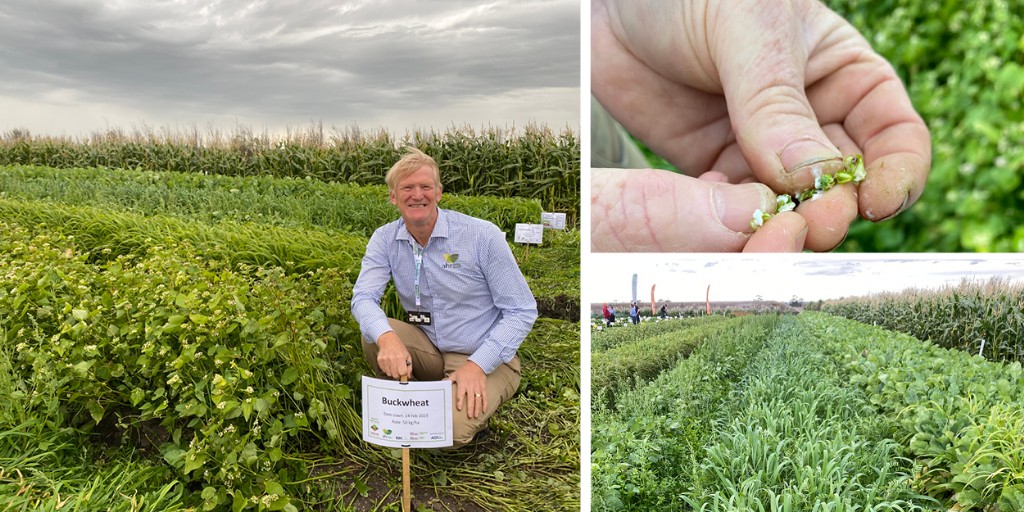
Clockwise from left: Dr Kelvin Montagu next to the Soil Wealth ICP buckwheat cover crop trial at VicVID; milky substance from buckwheat seeds shows the cover crop is ready to terminate; mixed species cover crops trialled.



